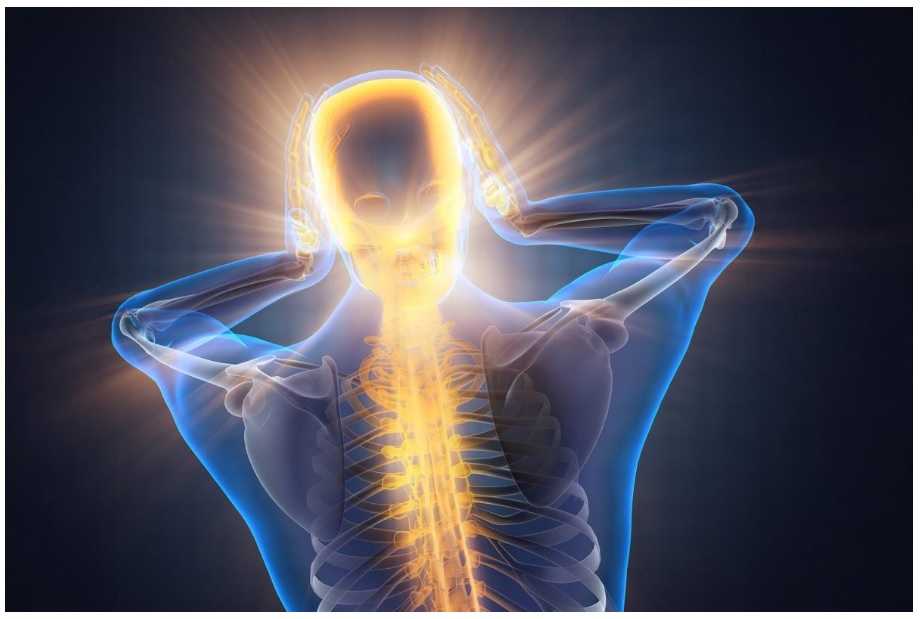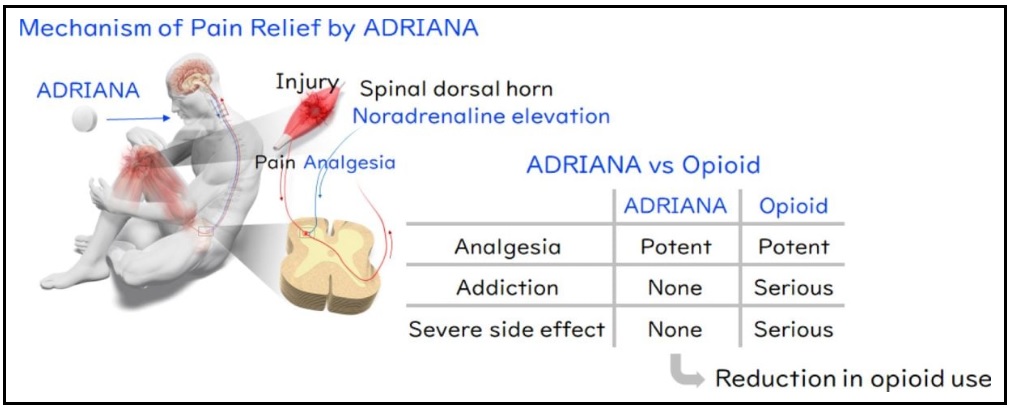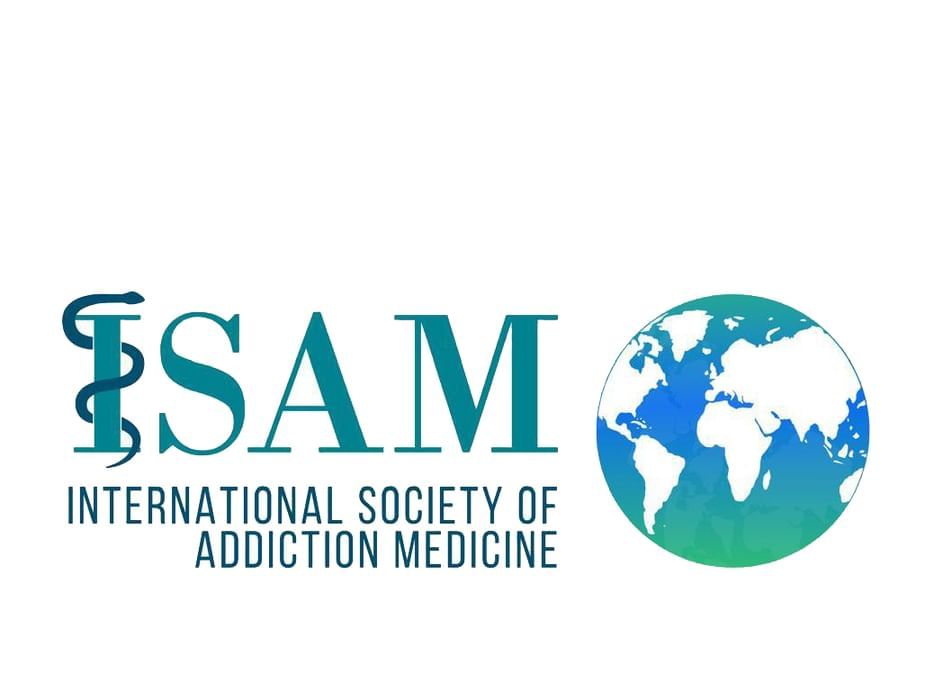by Shalini Ramachandran and Betsy McKay – Wall Street Journal – July 31, 2025
Hundreds of thousands of veterans with PTSD have been prescribed simultaneous doses of powerful psychiatric drugs. The practice, known as “polypharmacy,” can tranquilize patients to the point of numbness, cause weight gain and increase suicidal thoughts when it involves pharmaceuticals that target the central nervous system, according to scientific studies and veterans’ accounts.
The VA’s own guidelines say no data support drug combinations to treat PTSD. The Food and Drug Administration warns that combining certain medications such as opioids and benzodiazepines can cause serious side effects, including death.
Nonetheless, prescribing cocktails of such drugs is one of the VA’s most common treatments for veterans with PTSD, and the number of veterans on multiple psychiatric drugs is a growing concern at the agency, according to interviews with more than 50 veterans, VA health practitioners, researchers and former officials, and a review of VA medical records and studies.
Polypharmacy has multiple definitions when it comes to central nervous system drugs. The VA defines it as taking five or more medications at the same time, while some medical researchers say it’s two or more and the American Geriatrics Society defines it as three or more.
There is an emerging medical consensus among VA doctors and researchers that taking multiple central nervous system drugs can wreak havoc on patients. Interactions between such drugs aren’t well understood, and their effects in combination can be unpredictable and extreme.
SOME CASE HISTORIES …
Mark Miller
U.S. Navy, Security Forces (1992-2007)
In 2007, Mark Miller was diagnosed with PTSD. The military put him on fluoxetine, otherwise known as Prozac. He became suicidal. Miller eventually weaned himself off medications and used “neuroplasticity” therapy which forms new connections in the brain. This April, returning suicidal thoughts prompted Miller to visit a VA hospital in San Antonio. A nurse practitioner prescribed a powerful antipsychotic in a five-minute appointment. Six days later, Miller returned, stepped off a shuttle bus and fatally shot himself in the head. “He did it clearly to speak for all the veterans who have no voice,” his father said.
- Aripiprazole
- Bupropion
- Cyclobenzaprine
- Fluoxetine
- Lithium
- Quetiapine
- Tramadol
‘They did not even listen to anything I said — just prescribed stuff. Unreal’— Text from Mark Miller to his father days before his suicide
The VA maintains that the best treatment for PTSD is talk therapy. But therapists are scarce and wait times are long, so overwhelmed doctors default to pills. Because there is no single drug designed specifically to treat PTSD, veterans often end up on drug cocktails as multiple specialists try to ease a variety of symptoms and prevent harm or suicide, according to VA clinical staff, studies and veterans.
“When it comes to the challenge of polypharmacy in these populations, it’s constantly chasing your tail,” said Dr. Ryan Vega, a chief healthcare innovation official at the VA until 2023, who still treats veterans. “It is where medicine is more art than science. We have medications that treat those symptoms but are we addressing the root cause?”
Nearly 60% of VA patients with PTSD were taking two or more central nervous system drugs at the same time in 2019, the latest year for which data are publicly available, according to a VA study. That works out to more than 520,000 patients, up 62% from a decade earlier, driven by a near doubling of the number of VA patients with PTSD due to more combat tours and better screening.
One silver lining highlighted by the study was that the percentage of PTSD veterans on five or more CNS medications declined to 7% from 12%, largely due to internal efforts to deprescribe opioids and benzodiazepines. (Central nervous system drugs affect the brain and spinal cord; psychiatric medications are a subset of CNS drugs). The VA declined requests from The Wall Street Journal to provide more recent polypharmacy numbers for veterans in its care.
The VA has long been aware of the risks of overprescribing, and has internal research since at least 2016 showing the potential harms, including increased risk of suicide. The internal polypharmacy data “was pretty concerning,” said Dr. Shereef Elnahal, who headed the VA health system until early this year. He recalled a veteran advocate who told him about three veterans on more than five psychiatric drugs each who died by suicide, one after the other. They had been “walking around like zombies” before they took their own lives, the advocate told him.
The VA’s use of psychiatric drugs has come under scrutiny from members of Congress and advocacy groups as the veteran suicide rate is roughly double that of U.S. adults who didn’t serve. Studies by VA researchers link the simultaneous use of multiple psychiatric drugs to suicide risk among veterans, including a 2016 paper that found Iraq and Afghanistan war veterans taking five or more central nervous system drugs faced higher risks of overdose and suicidal behaviors.
Lucas Hamrick
U.S. Army, Special Forces (1996-2019)
Lucas Hamrick was diagnosed with PTSD in the Army. There, and then at the VA, he was prescribed multiple central nervous system drugs. Some put him in a daze, others made him feel like he might want to kill himself. After losing 12 friends on similar drug combinations to suicide, Hamrick quit all the medications by 2023 and turned to meditation, mindfulness and breathing exercises. “It’s about structuring life around how not to let things spill over,” he said.
- Chlordiazepoxide
- Diazepam
- Gabapentin
- Hydrocodone-acetaminophen
- Lorazepam
- Naltrexone
- Paroxetine
- Phenobarbital
- Prazosin
- Propranolol
- Rizatriptan
- Sertraline
- Trazodone
‘The quality of mental health care made me feel like I was there to check a box and complete the process instead of working toward any type of changes in perspective or disposition.’
Yet the agency has been slow to mandate changes. It has failed to implement nationwide electronic systems to alert doctors when they prescribe multiple psychiatric drugs, despite evidence from its own studies that these alerts improve care. The VA doesn’t uniformly require written informed consent for all psychiatric drugs with suicide risk, something that veterans groups and some members of Congress are urging. Some veterans who have resisted taking cocktails of drugs say they were warned by VA and military doctors that refusing them could jeopardize their eligibility for disability benefits, which can reach $4,500 a month.
“I’ve been mortified by practically every veteran I’ve seen having been prescribed multiple psychiatric medications, often without a timely referral to therapy or without any referral at all,” said Janie Gendron, a therapist who worked for the Defense Department and has seen hundreds of active-duty service members and veterans in the past 25 years.
A VA spokesman said the agency is looking into the issues raised by the Journal, and that the Trump administration is seeking to address serious problems it has identified in veterans’ healthcare that weren’t solved by the Biden administration.
VA Secretary Doug Collins said at a congressional hearing in May that the agency is pursuing the potential use of alternative therapies, such as psychedelics, to offer more options and reduce the risk of suicide among veterans.
The rise of the combat cocktail for PTSD has its roots in the overreliance on a single class of drugs: benzodiazepines. By the 1970s, the military and VA relied heavily on Valium and, later, Xanax as a primary treatment for traumatized service members and veterans returning from deployment. But in the 1990s, Defense Department researchers observed that high doses often yielded poor clinical outcomes, and, along with the VA, ultimately advised against their long-term use on veterans in 2004.
Still, against the guideline, the VA has doled out benzodiazepines to more than 1.7 million patients with PTSD diagnoses since 2005, its own data show. It took nearly a decade for the use of those drugs to start to decline.
At the same time, prescriptions to veterans with PTSD rose for other powerful psychiatric drugs.
VA doctors and patients say that existing tools to limit the number of psychiatric drugs a patient takes, and guidance to avoid the use of benzodiazepines and certain antipsychotics for veterans with PTSD, are frequently ignored.
A friend’s suicide
After his best friend’s suicide in 2013, Iraq war veteran Doug Gresenz was diagnosed with PTSD and borderline personality disorder and eventually put on six psychotropic drugs. After one medication’s dosage was increased, he attempted suicide and was hospitalized. When he protested the volume of medications there, he said VA doctors questioned his commitment to recovery and told him he needed the pills to lead a normal life. “I was guilt-tripped,” he said.
Doug Gresenz
U.S. Marine Corps, Assaultman (2006-2010)
- Baclofen
- Bupropion
- Citalopram
- Clonazepam
- Clonidine
- Cyclobenzaprine
- Divalproex
- Doxepin
- Erenumab-aooe
- Eszopiclone
- Gabapentin
- Hydroxyzine
- Melatonin
- Methocarbamol
- Mirtazapine
- Olanzapine
- Oxycodone
- Prazosin
- Propranolol
- Sumatriptan
- Quetiapine
- Tizanidine
- Tramadol
- Trazodone
- Venlafaxine
- Zolpidem
‘I remember thinking: I’m literally poisoning myself.’
In 2016 alone, VA doctors prescribed him more than a dozen drugs, including antidepressants, antipsychotics, muscle relaxants and medications for nightmares, anxiety, pain and sleep, medical records show. Over little more than a decade, he received more than two dozen central nervous system medications. He recalled complaining to VA doctors that he was “so doped up” he would have accidents before getting to the bathroom.
“I remember thinking: I’m literally poisoning myself,” he said. In 2018, he quit benzodiazepines cold turkey and began to taper off the other drugs.
Within a couple of weeks, he collapsed, unable to use his legs. He developed a stutter and extreme light sensitivity. Violent spasms led to another fall, which caused complications that resulted in a severe foot injury and, eventually, an amputation last year.
The VA recommends any one of three antidepressants for PTSD—sertraline (Zoloft), paroxetine (Paxil) and venlafaxine (Effexor). But doctors are free to prescribe other additional drugs off-label—and many do.
“It’s super normal to see someone on five or six medications,” said Mary Neal Vieten, a retired Navy psychologist who has worked with thousands of members of the military and veterans. “That’s like an everyday thing.” Trauma has been medicalized, she said. “They’re acting as if the problem is in the person,” she said. Instead, it’s a normal response to an overwhelming experience, she said.
‘Stop-and-go’ pills
The culture of combat cocktails begins for some who are diagnosed with PTSD while still on active duty. In the military, too, drugs have long been given priority over psychotherapy, according to many veterans, former VA officials and therapists.
One Navy chaplain said his repeated calls to the Navy for more mental health resources went unanswered despite his documentation of more than 70 critical events, including suicide attempts, at a high-stress installation with nuclear submarines. When the chaplain himself grew suicidal, Navy doctors suggested that refusing the three-medication cocktail they prescribed could lead to discharge without benefits, instead of medical retirement with care.
Some veterans enter VA care dependent on psychiatric drugs that they were prescribed to improve combat readiness. They include Air Force veterans given “stop-and-go” pills—stimulants followed by sleeping pills.
Michael Valentino, who was chief pharmacist at the VA until 2021, said he grew alarmed by the rising numbers of service members entering VA care on stimulants without a diagnosis justifying it. “Then the VA has the burden of trying to undo it.”
Heather King
U.S. Air Force, Aircraft Maintenance Craftsman (2001-2010)
Heather King struggled with sleep after the Air Force prescribed Ambien following long flights. After her discharge, she was diagnosed with PTSD, and the VA added eight central nervous system drugs by 2020. King begged for help weaning off. Her VA doctor’s response: “Heather, under no circumstances are you ever going to be a person who is going to operate without meds.” She’s lately been sleeping soundly without pills for the first time, thanks to cognitive behavioral therapy for insomnia—something the VA only told her about recently.
- Amitriptyline
- Buspirone
- Cyclobenzaprine
- Doxazosin
- Doxepin
- Duloxetine
- Fluoxetine
- Gabapentin
- Hydroxyzine
- Lamotrigine
- Lorazepam
- Mirtazapine
- Prazosin
- Propranolol
- Ramelteon
- Trazodone
- Zaleplon
- Zolpidem
‘It was like a death sentence. All these medications, they just made me numb. I wanted to feel my feelings, I wanted to actually heal.’
A Pentagon official said several medications at once are sometimes necessary for patients with multiple medical problems or who are treatment-resistant, adding that “records are reviewed to determine if the treating provider has provided clinical justification for the use of polypharmacy.” Service members and their families are offered “a robust and comprehensive array” of mental health programs, the official said.
Chemical messengers
Psychiatric drugs work by affecting levels of chemical messengers in the brain called neurotransmitters, which send signals between nerve cells and other cells in the body. For instance, many antidepressants increase levels of serotonin, a neurotransmitter associated with mood. Benzodiazepines enhance the activity of a neurotransmitter called GABA, while some antipsychotics block dopamine receptors. Layering on several of these central nervous system agents at once can magnify their effects.
Combining an antipsychotic drug that activates dopamine receptors with one that blocks dopamine can exacerbate psychosis, said Dr. Sanket Raut, a research fellow specializing in polypharmacy at Gallipoli Medical Research in Brisbane, Australia. By the same token, benzodiazepines and opioids taken together can increase the risk of overdose. “Polypharmacy is a big problem,” said Raut. “There are many side effects: cognitive impairment, dizziness and the risk of falls.”
Erika Downey
U.S. Army, Military Police (2007-2013)
Amphetamine-Dextroamphetamine
- Clonazepam
- Erenumab-aooe
- Fluoxetine
- Lorazepam
- Trazodone
‘They give out these giant paper bags filled with medicine after your first psychiatrist appointment.’
“They give out these giant paper bags filled with medicine after your first psychiatrist appointment,” said Erika Downey, a 35-year-old retired Army sergeant with PTSD. Women are more likely to be prescribed multiple drugs concurrently against guidelines, VA researchers have found.
Downey’s bouts of suicidal ideation while taking antidepressants, benzodiazepines and stimulants were so bad she once called a friend to come take away her gun. After that, she decided talk therapy would be the best medicine. She weaned herself off the drugs on her own over two years. She had to wait three years for a VA psychotherapy appointment. “At the VA, you are more quick to get into a psychiatrist”—someone who can prescribe meds—“than a psychologist,” she said. Gray for WSJ
Only 15% of veterans diagnosed with depression, PTSD or anxiety are offered psychotherapy in lieu of medication, according to a 2019 report by the Government Accountability Office. “They’re really leveraging the prescribing to keep up with patient demand,” said Derek Blumke of the Grunt Style Foundation, a nonprofit veterans’ care group. Many VA providers’ impulse is to “get them in and get them out,” said Chris Figura, a patient advocate at a VA in St. Louis.
Navy veteran Dick Johnson, in the VA system for three decades and diagnosed with PTSD and bipolar disorder, was prescribed more than 25 different central nervous system drugs, including antipsychotics, antidepressants and epilepsy medications, sometimes on six concurrently, his medical records show. He blames them for the collapse of his two marriages. “They pretty much destroyed my life,” Johnson said. When he worsened on one antipsychotic and experienced intense withdrawal tapering off, VA doctors tried to patch him up with a cocktail of other medicines including benzodiazepines. In 2006, he started a prolonged dose of Seroquel, a powerful antipsychotic, to get off benzodiazepines, because doctors said it was supposed to be easier to stop. His weight soared and he developed diabetes. Quitting Seroquel “nearly killed” him, as he suffered intense vomiting, diarrhea and a near-inability to digest. He’s still tapering off Paxil and Tegretol today, using a jewelry scale and sandpaper.
Drugged for Decades
Dick Johnson, who joined the Navy in 1989, was diagnosed with bipolar disorder. After he was medically discharged in 1994, the VA put him on a heavy regimen of psychiatric drugs that made matters worse.
- Medications prescribed, by class and date
- Mood Stabilizers Anti- Psychotics Anti- Anxiety Anti-Depressant Medicated with lithium, which makes him severely ill 1995
- Lithium Divorce with first wife 2000
- Second marriage ’05 PTSD diagnosis
- Divorce with second wife Seroquel ’10
- Retires with disability from power plant ’15
- Side effects of medications lead to ICU visit. Seeks help outside VA to taper off meds ’20
- After cutting backmeds, joinssupport groupsand shares hisexperience
- Note: Does not include all medications, including those prescribed for short durations.
Dr. Saraswathy Battar, a VA geriatrician, launched a passion project in 2016 to decrease the use of potentially inappropriate medications. After noticing veterans suffering from debilitating symptoms that she attributed to overprescription, she developed an electronic tool that has helped providers discontinue more than three million prescriptions. About half of VA providers are using the optional tool, she said, but they’re mostly caring for older veterans or those in palliative care, while it’s been hard to get mental health providers to adopt the tool. Some said they were unaware of its existence. “Suicide and homicide get attention,” but “there’s no penalty for not prioritizing polypharmacy reduction,” she said.
A path forward
After years on psychiatric drug regimens prescribed by military and VA doctors, a growing number of veterans are taking healing into their own hands, often exploring unconventional treatments. Many veterans said they are frustrated and angry that the country spends heavily training them to be lethal, but there’s little support for their fragile mental health as they reintegrate back into society.
Scott Griffin, the former special operations soldier who contemplated suicide last year, reached out to a group called Veterans Exploring Treatment Solutions, or VETS, after the episode. Their suggestion: ibogaine, a powerful psychedelic derived from an African plant and illegal in the U.S., but only after tapering off his current medications. When Griffin asked his VA prescriber for help tapering, “he point-blank refused,” Griffin said.
He embarked on a gruelling self-taper. “I was white knuckling. I broke my teeth from clenching,” he recalled, battling intense vertigo and suicidality.
After 12 hours of altered consciousness on ibogaine in Mexico, Griffin took 5-MeO-DMT, a psychoactive compound most famously found in Colorado River toads’ poison, which he says was a profound spiritual experience. Since returning home in March, he has discarded his pills, prays daily and spends time with family, reconnecting after years of being “consumed by panic and anxiety.”
A Stanford study of 30 special operations forces veterans published last year found that ibogaine sharply reduced PTSD and related symptoms. A bipartisan bill in the House aims to fund VA research into psychedelics, which doctors caution remain largely unproven in clinical trials.
Says Griffin, “How does bark from a tree and venom off the back of a toad beat all this crap, all these pharmaceuticals they push down your throat?”
Source: Maggie Petito – www.drugwatch.org




































